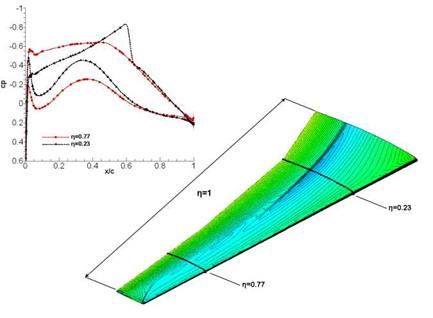TAU Implementation
To automatize the procedure and to reduce the required effort it was decided to implement the Taguchi method into the TAU Code by using Python scripts. The new script, which was published with the TAU 2012 release supports the user during the selection of the Taguchi Matrix, its modification and in the consideration of interactions. Several parameters can be chosen from a given list, which can be extended at any time. After defining parameteres and their levels para files (TAU control file), job files (to start the simulation on the high performance computer) and required folders are setup automatically for all required simulations based on the informations from the chosen Taguchi-Matrix. The simulations can be either started in serial mode as one ”big” job or in parallel mode. The second approach needs to be used if the parameters to be investigated include changes in the meshes or turbulence models. Both can not be changed during a running TAU job. To support the user in this case a text file is written out to give information which mesh or turbulence model needs to be used in which simulation. When all simulations have been successfully finished the results can be examined using the ANOVA analysis. This step is automatized by a script as well. The script takes the Taguchi Matrix,
|
Fig. 11 Cp distribution of the SFB-401 wing. Cut at n=0.77 and 0.23 |
searches for the required TAU output files and reads in the results defined by the user before. Finally, the results of the ANOVA analysis are stored in a solution file, which can be easily read by Excel or other vizualisation tools. Validation of the program showed perfect agreement with the manual analysis and the required time is massively reduced as the hole setup for the TAU simulations is automatized. Still some knowledge about the Taguchi-Method is required. Therefore, a detailed users guide is added to the scripts including a detailed description of the Taguchi-Method and several examples.












